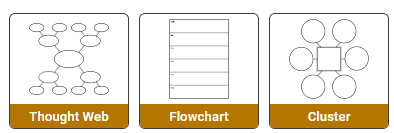Your First Action Research Cycle
Use these six steps to get going with your first action research project

When you first started teaching, you likely had dreams of the things you'd do and the impact you would make in your classroom. Hopefully, you still carry this dream. Action research can help you achieve that dream!
You may be a little overwhelmed by the idea, but action research is simply a reflective process where educators identify a problem, implement a solution, observe the results, and adjust accordingly.
Here are 6 steps for an informal approach to your first action research project!
Step 1: Reflect on Your Classroom
Reflect on your vision and tell the story of your classroom. Explore the current demographics and challenges in your classroom. Describe changes you have already made. Ask yourself:
- Have these changes resulted in improved learning?
- What might have contributed to these positive outcomes?
Step 2: Collect Data
Go back and start collecting data so that you have quantitative and qualitative information that back up your informal analysis (your hunches and feelings). You can explore grade books, attendance numbers, disciplinary referrals, and student work. You can even give surveys to students about past work.
Step 3: Analyze the Data
Work to identify patterns or areas of concern. Do any of these match your original reflections? Do any of these connect to actions you have already taken?
Step 4: Decide on a Single Action to Take
This might be the best part of action research. You don't have to solve the entire problem right now, but you do need to take a next step.
Look back at your analysis, and decide a first step to addressing issues you have found and how long you will evaluate your efforts.
Then, identify ways you can track your efforts. For example:
- Will you keep qualitative notes on student behavior?
- Can you capture changes through quantitative measures like tests and quizzes?
Step 5: Implement the Plan
Put your action plan into practice in your classroom. Be sure to collect and record qualitative and/or quantitative data.
Step 6: Reflect and Adjust
When the time allotted is complete, review the data and reflect on the success of your efforts. Remember, even if your actions didn't have the intended outcome, you now have more knowledge of where (or where not to) expend your teaching energies to have the impact you want.
It's time to get started
Once you have a clearer picture of where you are, where you have been, and where you want to go, it will be much easier to repeat the cycle and continue the pattern of positive change.
If this still seems overwhelming, consider the words of action research expert, Dick Sagor who shares, "inquiry is something we do naturally" and you have likely used parts of the action research cycle many times in your classroom already. For example:
- Every time you looked back on how a lesson was implemented and consider how you might change it to make it better, you have done research.
- Each time you read about a new technique or strategy and plan to try it with your students, you have created an action plan.
- When you reviewed student samples and realize with satisfaction that a change you made in your instruction worked, you have analyzed data.
If this seems easy, get a more in-depth understanding of what is involved.
You've got this!












